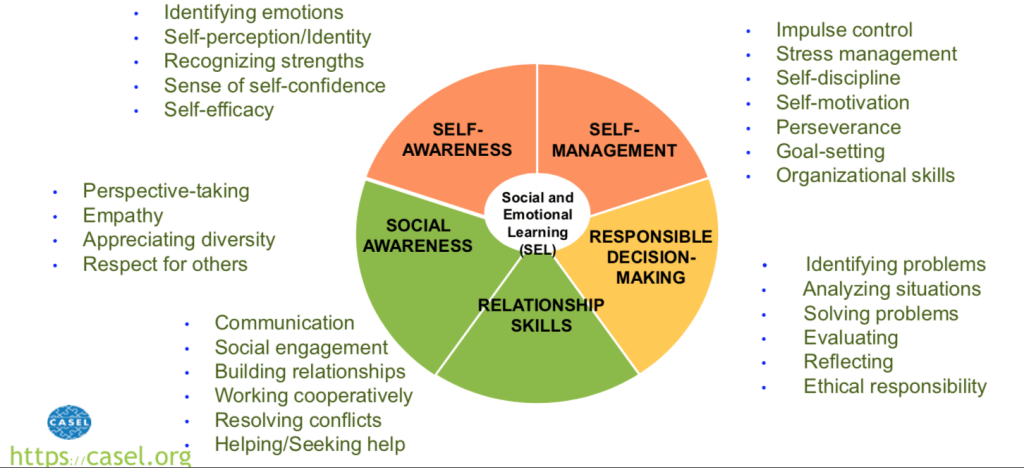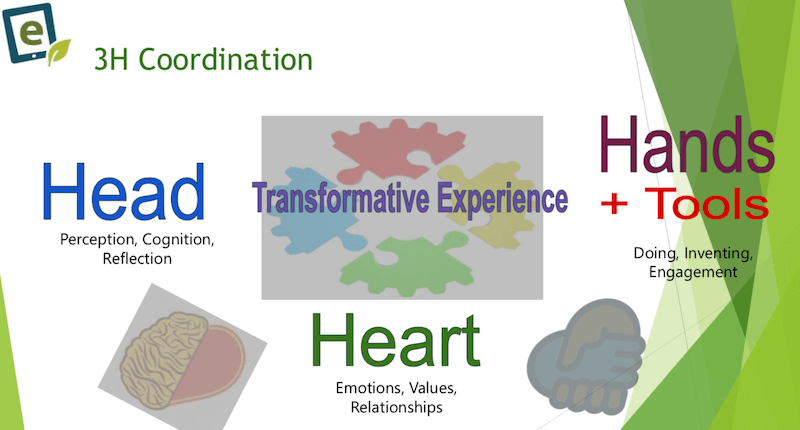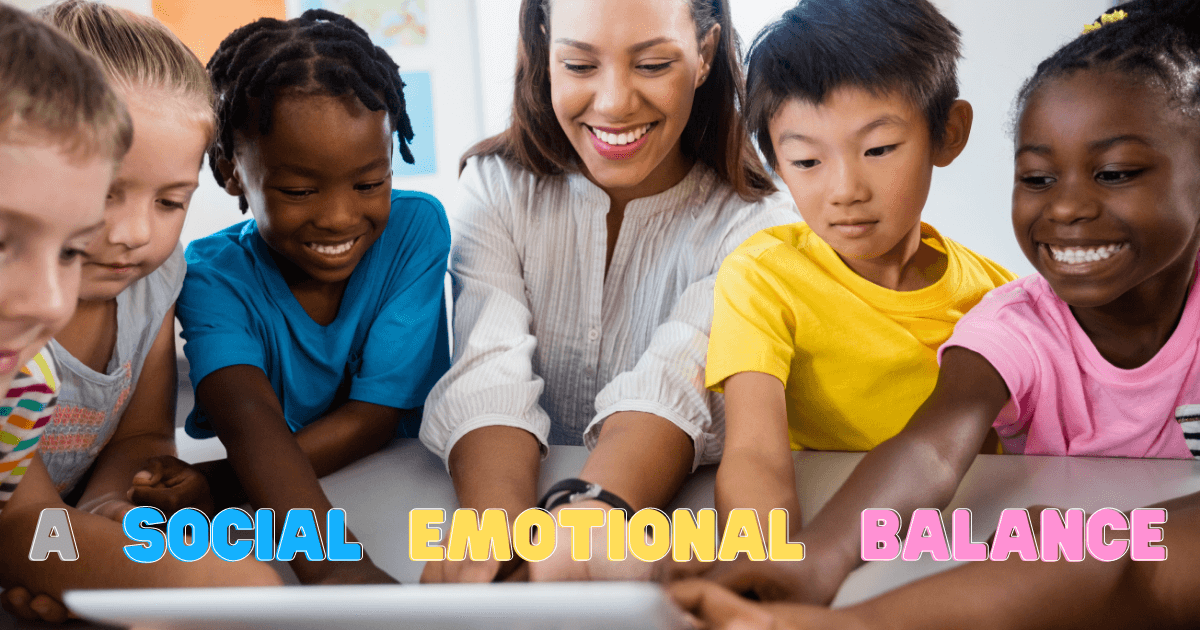Since the onset of the pandemic, delivering quality instruction to every student has proven to have unique challenges. Dealing with remote learning, relationship barriers, and, in some cases, more serious problems, proved to take a pretty big toll on many in the education community and, to be perfectly clear, that includes students. Students of all ages struggled to simply receive their education and those struggles also certainly involved social and emotional hurdles. Now that we're back in more normal times, it's often those social-emotional repercussions that have the longest lasting effects on students. So, helping them balance their social-emotional strength, maintaining connections, and moving forward continues to be crucial.
Students have dealt with a slew of emotions—many of which have been new—since learning went remote. In many cases, this led to new stressors for many of them. They included dealing with social isolation, guilt, and possibly even grief. To continue working on regaining the social-emotional balance, we still believe that leveraging that connection between students’ heads, hearts, and hands remains important. And, MakerEd tools could help them recapture the emotional balance and better focus on learning, effectively expressing their ideas, and sharing their feelings in a comfortable space.
EdTech and social-emotional learning.
Hands-on EdTech tools can be very valuable in today's varied instructional settings. At the top of that list of benefits, we’re focusing on how they could help children stabilize their mental states and also serve as a source of high-quality learning opportunities. Now, it makes sense that, in order for educators to help these children return to a state of social-emotional balance, they should be fairly familiar with the five branches of social-emotional learning. These include self-management, responsible decision making, relationship skills, social awareness, and self-awareness. As you can see below, each of the five branches also include some sub-areas that constitute overall social-emotional strength. These have been defined by professionals at the Collaborative for Academic, Social, and Emotional Learning (CASEL).

These sets of social-emotional factors were, of course, determined before the pandemic. While they remain relevant now, there have also been additional SEL-related factors to emerge alongside them as well. Those new pieces of the puzzle start with the stressors that students faced while involved in home learning. Many of them experienced isolation like never before and were unable to build or maintain relationships with their teachers or friends. Emotional tension was also common and it stemmed from many different sources, like remaining home with family members so much. Tensions often appeared in the family dynamic or resulted from trauma, which led to a social-emotional imbalance in many children.
Stressors from outside the education world.
Beyond those, students likely felt anxiety towards the enormous public health crisis (and may still be). It is likely that they wondered if things (things bigger than learning) would ever really return to normal. They also perhaps experienced anxiety about their learning situations, including changes from in-person to remote or in-person to hybrid learning. They also had to find a way to cope with daily technology issues that impeded their already disrupted relationships. Though remote learning might not have been best for instruction, that continuity it provided throughout the previous school year was probably ultimately best for some students.
Remote education also exposed inequities in learning—inequities related to students' physical locations, socioeconomic status, and sometimes even ethnicity. Among other effects, these led to an unprecedented level of variance and vulnerability for students and parents. Plus, the urgency of getting them back into the classroom was constantly weighing on the minds of so many. Many students struggled to adapt to remote learning, though this certainly wasn't true for everyone. Some kids, in fact, were actually thriving in remote instruction, completing assignments, and interacting with their peers and teachers.
For many students, the stress and anxiety associated with the pandemic and how it affected their social-emotional health remains noticeable. It might be continuing to affect their brains and impairing cognitive skills, affecting their concentration, and leading to creativity barriers. Trying to move past these stressful situations has also impacted how students communicate effectively, recall bits of information, regulate their emotions, and return to pre-pandemic levels of academic performance. Often, the lack of familiarity and control from remote education is blamed for this continued struggle.
Combining hands-on and social-emotional learning.
To lead truly authentic classroom learning experiences, educators still must try to create that all-important social-emotional balance. That is easier said than done, of course, especially since they still have so much on their plates. Clearly communicating with students, figuring out their top concerns, and addressing those stressors, however, is key to continuing to move forward. Educators can create safe and supportive spaces for their students and work to restore relationships with a focus on proven pedagogical methods, flexibility, conversation, and creating authentic connections.
One of those opportunities comes from hands-on learning—a once-utilized approach to helping students explore key concepts and develop skills. Bringing STEM and EdTech tools into today's instructional plans, however, has understandably presented a problem for many. Besides the fact that most educators need to focus on teaching their core curriculum, it’s not as easy to set students up to collaborate. STEAM solutions that intrinsically allow for those collaborative opportunities, however, have become invaluable as we focus on social-emotional restoration. They can also simultaneously help students to re-establish the authentic connections they’ve had with peers in the classroom previously.

Technology tools, like robotic kits, for example, that work in different settings are very valuable in this day and age. Other inexpensive materials, like those you might commonly find in any school makerspace, can also help teachers recreate hands-on discovery that aligns the heads, hearts, and hands of students in a productive learning experience. Also, STEAM solutions that have an offline component are sometimes just as effective. These help kids jump back into hands-on STEM and SEL but also allow them to take a break from screens. After all, excessive screen-based learning may have effects we're not fully aware of yet.
Creating emotional connections to class work.
This is one example of students connecting their heads, hearts, and hands through engaging activities while focusing on new things. This piece of it—diverting their focus away from stressful situations—can also prove to be very valuable. Allowing students to return to active learning requires active engagement and committing their entire selves to the activity. With their brains less likely to drift back to their stressors, they can start to feel a greater sense of normalcy, embrace their natural abilities, and foster their creativity when re-establishing authentic connections with school work and peers through MakerEd experiences.
Students can use maker tools collectively during their classes or as part of independent exploration after school. If they have access to tools like this, they can enhance their self-discovery, develop resolve, defeat insecurity, and overcome some of their anxiety. This is largely because these types of learning experiences encourage communication and allow for educators to provide positive feedback. And, we believe that this holds so much potential when it comes to helping students regain social and emotional stability.
If you’d like to learn more about using STEAM and MakerEd technologies for addressing social-emotional deficits, contact our team at anytime. We also have an extensive list of SEL resources, including EdTech suggestions and webinars with some of our STEAM partners. As always, we continue to offer support for any educators who are struggling to create these types of learning experiences. Follow us on Twitter and Instagram for more and check out additional SEL content on our blog.




1 Comment